If you’re looking for the best hidden and highly underutilized Barbecue Cooking and Grilling Tips, you’ve come to the right place. In this guide I will show you the top cooking and grilling tips that I use which have achieved me and my 700+ customer’s massive results for cooking and grilling barbecue.
Bonus: I’ve added links to our most popular BBQ Recipes to get you going fast and to achieve BBQ Success right away.
Before you start reading this page I highly encourage you to head over to my Facebook page and join me and others as we discover together the world of barbecue.
The Barbecue cooking process can be divided into separate and distinct categories and actions:
• Before the Barbecue, planning…what to cook?
• Preparation for the Barbecue, the grill, the meat, the sauces and seasonings
• Marinating, seasoning
• Tools and equipment for barbecue, containers and transport • Starting the grill, heat management, temperature control
• Managing the temperature and time continuum
• Confirming the ending of the cooking grilling process
• Resting and warming the completed barbecue
• Serving
My tips will center around these 9 categories each designed to help you achieve success on every level. Let’s Get Started!

Tip: #1 First determine if you’re cooking for yourself or with others. I know it sounds simple but if your are cooking for others you may have to consider whether someone has an allergy or dislike for some meat or food type. Focus on meats or foods that can be cooked or grilled within a 4 hour window.
Too often so many of the comments I get about barbecue cooking and grilling involve those who’ve had a bad experience or an unpleasant experience cooking a particular meat or vegetable. 90% of the time I’ve found that the reason the meat or vegetables did not achieve the success sought by the user was due to poor planning. So many see the latest cooking craze on one of the popular food channels then head out to their local market or butcher to pick up that rib roast or brisket with eyes on cooking the meat in 4 hours or less. Consider the meat, the grill or the stove, the heat used, the conditions for cooking and grilling either indoors or out, and realize the basics for every 1 pound of red meat it can take the average grill up to 2 hours to cook at 275 degrees. So, a 10 pound brisket will easily take 18 to 20 hours if slow cooked at 250 to 275 degrees to achieve perfect tenderness.
Tip #2 Good quality meat relies on tenderness and flavor and is directly related to what part of the animal the meat is derived from and also how you plan on cooking it. Begin with the end in mind an old adage told to me by relatives and friends over the years not to mention professors. Your selection of meat will ultimately depend on the primary purpose for the cut as well as factors like color of the meat, marbling, fat content, age of the cut, and days until the meat will actually be used.
Tip #3 Buy the highest USDA grade available that is compatible with your budget. Be careful not to get caught up in the hype of supermarkets latest scheme of the day with names like “Butcher’s Cut” or "Five Star Prime”. The terms are focus on deception as they attempt to sell lesser quality cuts of meat for upper quality prices to an unknowing public.
Tip #4 Buying meats that are frozen can save money over fresh cut but it’s important to properly manage the thawing process before using the meat. Improperly thawed foods will cook similarly to properly thawed or fresh meats however improperly thawed meats will remain cold and raw in the center much longer than fresh or properly thawed thus during the cooking process you may receive inaccurate reading while cooking meats especially if you are measuring the temperature of the meats at the surface level. Follow the proper process for thawing meats to reduce the potential for production of bacteria especially when meats were left out to thaw on the counter.
Tip #5 Raw foods and meats should be stored and prepared separately, especially when the meats are not going to be reheated right away.
Tip #6 Always remove frozen meat from its packaging before thawing in the fridge. This will help speed up the thaw process especially with the Styrofoam insulator is removed.
Tip #7 Cleaning is essential to stall the growth of bacteria. Clean any surfaces that have come in contact with raw meats and thaw water or marinades used during or after the thaw process. Thoroughly wash usage areas with warm water and soap. A 25/75 mixture of bleach and water can be used the treat the area as a final step after cleaning. Spray the area with the mixture ensuring that all surfaces have been removed of dishware; food stuffs, packaging or obstacles then spray the area and wipe down. Let the wiped area air drive before future use. The preparation process is probably the most important step in barbecue. So many fail to realize the simple truth if you start out wrong you end up wrong. First visualize how you want your barbecue to turn out. Do you want mild or spicy seasoned meat or sauced meat that covers your fingers and gets all gooey? Are you just looking for a char on your hamburgers of grilled meats? Let’s spend some time on tips that will improve your preparation process.
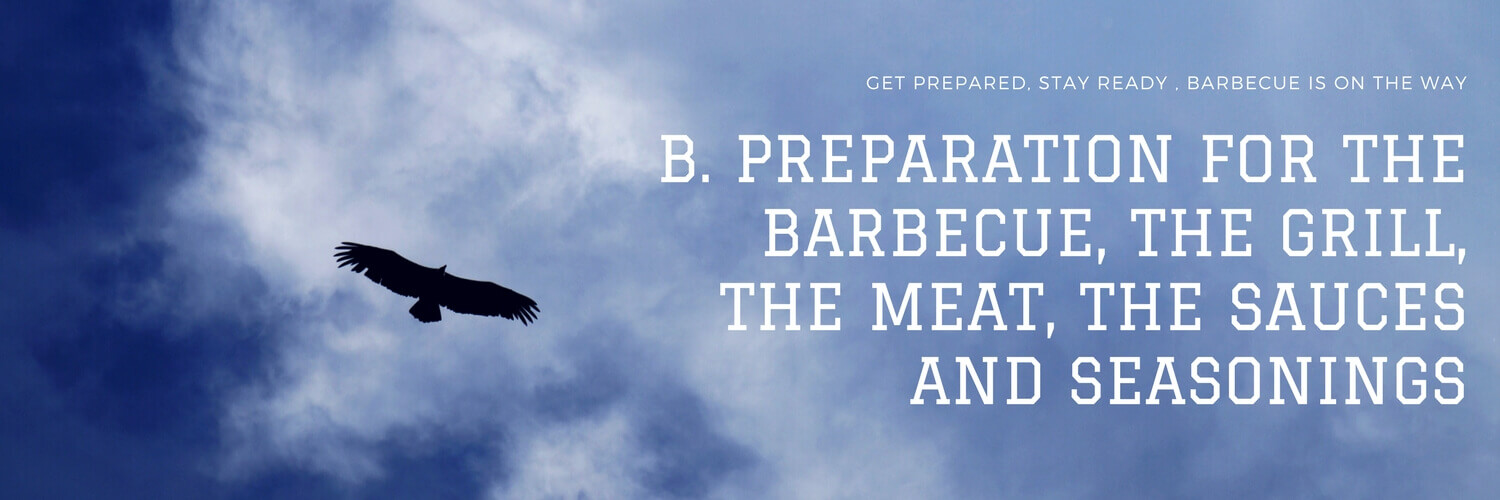
Tip #8 Cleaning the grill before use can actually improve its performance and produce better meals.
Tip #9 Most grill manufacturers recommend cleaning your grill after every use. By cleaning the grill you actually allow the grates to heat to their intended temperature creating a better sear and grilling result. Caked on or charred on meats from previous grill sessions can actually distort the cooking temperature requiring more heat and time to cook your meal.
Tip #10 Cleaning for a gas grill: turn all the burners to “HIGH” and let the grill run for 15 minutes. This will cook off most of the debris. Afterward, use a long-handled grill brush to scrub the grate while it’s still hot.
Tip # 11 For a charcoal grill: Scrub the grate with a long-handles grill brush while the grill is hot taking care not to burn yourself or melt any plastic brushes. When the grill has cooled, empty the ash pan into a fireproof bag and discard.
Tip #12 Charcoal ash is actually good soil amendment for your garden. If you’re an avid gardener who enjoys barbecue consider using the leftover ash in your garden to help break up the soil and to add some essential minerals.
Tip #13 If cleaning the grill with cleaning fluids always ensure that the fluids have been washed off or completely dried before placing the grate over high heat.
Tip #14 Using high quality all natural barbecue sauce, dry rubs and marinades can and do improve the taste of the meal but also can improve the satisfaction of your guests. Barbecue sauces and marinades are intended to tenderize and add flavor. Lesser sauces and dry rubs use ingredients sometimes considered unsafe and can actually collect leaving one feeling bloated or heavy. A good quality barbecue sauce or dry rubs like Jake’s Famous Barbecue Sauces and Dry rubs will not only help tenderize meats but will also help you stay in shape improving how you feel after the meal because they do not contain corn syrup, MSG, high amounts of sodium, artificial sweeteners, or strange chemical combinations. You get a better product with a better taste to improve your end results. See our link: Jake's Famous All Natural BBQ Sauce, Dry Rub Seasonings and Marinades today.
Tip #15 Charcoal Briquettes must be used properly to give you the best chance at achieving success. Focus on using briquettes purchased in the same season as your usage. Briquettes that are over a year old may not hold together well or deliver heat well throughout the cooking and grilling cycle.
Tip #16 Calculating the right number of briquettes to use. To calculate the necessary number of coals, cover the fire grate with an even layer of charcoal briquettes, edges touching, the number of briquettes needed to cover the grate is the exact number you will need to get the fire started. A good rule is to add 5 to 6 briquettes every hour to maintain a constant temperature by placing them directly on the existing hot coals. If using an indirect cooking method space the briquettes on either side of the grill.
Tip #17 Preheated briquettes - You can get a jump on the grilling process when needing additional briquettes to an existing grill session. Take a chimney starter and add 8 to 10 briquettes. Light the briquettes the standard way using newspaper or any flammable paper. Limit the use of materials containing dies or inks or cloth simply because they can give off odors or transfer trace amounts of these items to the briquettes and onto your meal. Once the briquettes have cooked down for about 10 to 15 minutes take a long pair of tongs and remove the briquettes one by one and layer them on your existing coals.
Tip #18 There are 11 Essential items you may need for your next barbecue when having family and friends join.
1. Portable vented grill, cleaned grill grates
2. Charcoal, lighter fluid, matches (some manufacturers sell small bags of briquettes designed for one use: burn them, bag and all--no lighter fluid required)
3. Barbeque tools: tongs, metal spatula, grill rack, oven mitts, apron to protect against spatter and grill contact
4. Grill spray such as PAM or spray oil to assist in removing cooked foods from the grill
5. Games: Frisbees, soccer balls, baseball bat, ball, gloves, kites
6. Chocolate bars and graham crackers for S'mores
7. Portable stereo
8. Insect repellant, sunscreen, first aid kit, sunshade or umbrella
9. White Vinegar, if barbecuing in a park with fixed tables wipe down the tables with White Vinegar 20 minutes before eating. Allow the vinegar to dry, which will keep flies and insects away from the table.
10. Baking soda or small fire extinguisher to tame grease fires
11. Transport Box to collect cooled grill and utensils after use
12. Garbage bags for trash and food removal

Tip: #19 Raw meat when cooked delivers very natural flavors. However, if you don’t enjoy meat that is simply cooked without seasonings then you should consider simple marinating methods with liquid marinades or dry spices. Let the liquids or spice rest on the meat for at least 1 hour or more then grill as you would normally. The dry spice or marinade will impart flavor to the meat enhancing the overall taste.
Tip #20 Never reuse a marinade once it has been on the meat. A tenderizing marinade contains food acids and tenderizing enzymes and can increase or speed up harmful bacterial changes that occur when meat is resting.
Tip #21 Marinades don’t have to be complicated to be effective. Take for example lemon or lime juice, vinegar, Italian dressing, salsa, yogurt and wine. Marinades are generally used with less tender cuts of beef like chuck roast, round, flank, and skirt steaks.
Tip #22 Tougher cuts of meat should be marinated for a minimum of 6 hours but no more than 24 hours. Longer times will result in a mushy texture.
Tip #23 Dry Rubs make excellent meat marinades. Dry rubs use combinations of herbs and spices and impart an added level of flavor. The actual process is similar to capillary action in that the moisture or sweat of the meat as it warms actually draws the seasoning into the meat. Because dry rubs don’t contain liquids they can be shaken on multiple times to build layers of flavor. As the meat moistens simply add an additional layer until you feel that you’ve seasoned the meat adequately.
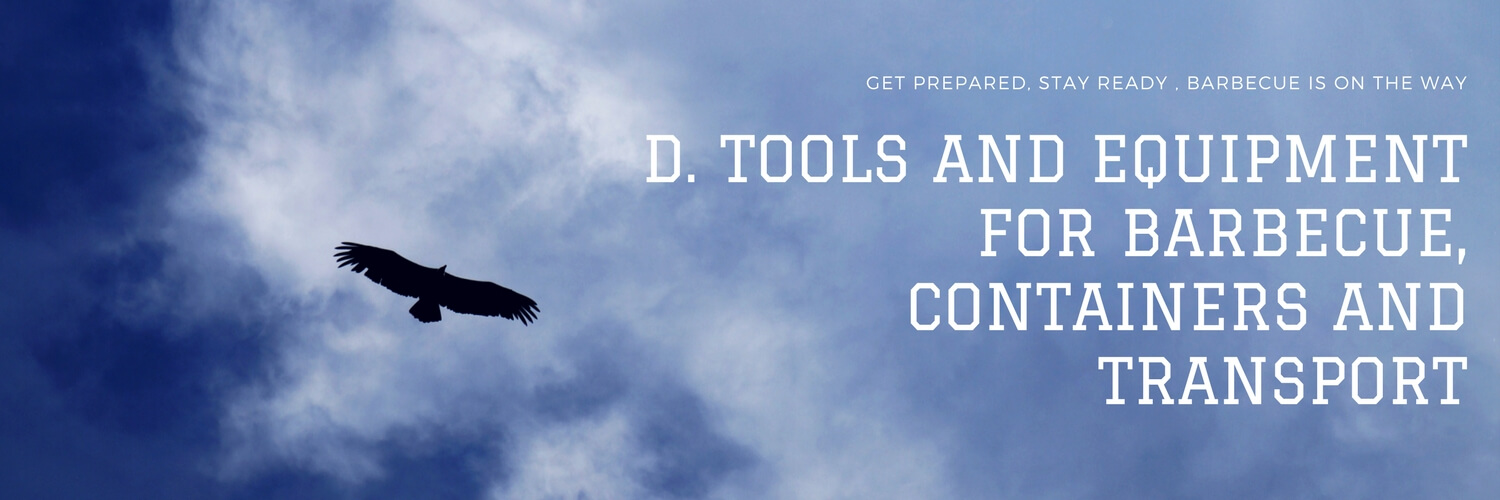
Tip: #24 There are several essential tools needed to assist you in your barbecue effort. First always have a good pair of tongs that can pick up meats at a good distance separating you and the fire of the grill. Always have a good set of gloves for handling hot items or hot implements. Also, always have a good meat thermometer for checking temperature and for determining the time it takes to cook your desired meat.
Tip #25 For charcoal grillers always have an acceptable ash can or a way to put out the charcoals after using them in the grill. Heat management works on the before and after the grilling cycle. Focus on managing the charcoals as if they were a camp fire in the forest.
Tip #26 Work Surfaces become almost forgotten for so many grillers. It’s important to have a work surface that can hold tongs, gloves, plates, or dishes and different things like marinades or aluminum foil.
Tip #27 One of the best tools I’ve used over the last year is a digital read out thermometer. The tool is excellent for allowing you to work on other things like salads and side items while visually managing and keeping an eye on the temperature at 60 or 80 feet away.
Tip #28 A good grill that can handle enough barbecue such that you don’t have to grill half at one time then remove and grill the second half. I find that an 18 inch round grill works wonders for most people. One does not need to be fancy when getting started grilling just have a grill that you can easily manage and that can be wheeled in and around the area that you’ll be working.
Tip #29 A spray bottle for flare ups. As one starts on the path of barbecue inevitably there will be flare ups. Of course as you grow in your understanding of grilling and barbecue the opportunities for flare ups will occur few and far between. At that point the cooking and grilling process becomes one of heat management and with the right tools you may never see another flare up.
Tip #30 A stiff wire brush for cleaning the grill. This isn’t always needed but it’s a good idea to have one. Nowadays you can get a multi-sided plastic tool that has a brush on one side, a cleaning pad on the other and a wire brush on one side as well.
Tip #31 A good knife that is sharp and can be used to cutaway sections of fats on meats as you prepare them for grilling.
Tip #32 Plastic bags or a plastic container. We use plastic bags for containing meats just after we marinate or season the meats. The bags eliminate the need for additional washing and store easily in the refrigerator. Containers also work well but of course there is the clean-up that follows.
Tip #33 For Gas grills a backup source for gas. We’ve used a number of gas grills and it’s always at the most critical moment when you realize that you ran out of gas 10 minutes earlier. Keep an eye on the gas and an extra container to minimize disruption.
Tip #34 A pan or a tray for cooking vegetables. Cook vegetables on the grill grates is the standard way but it helps to have a tray when you’ve got a lot of items on the grill that need to finish at similar times.
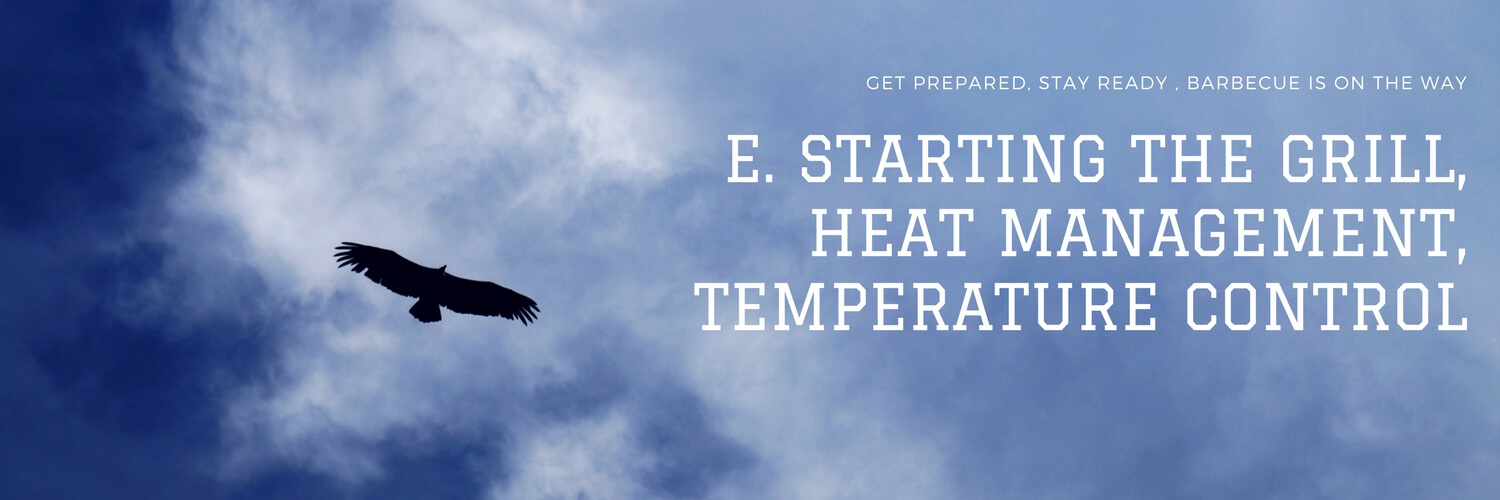
TIP #35 The key to any barbecue is getting the grill started. First things first, if using a charcoal grill the simplest way to get a lot of coal started is just plain old lighter fluid. However, the down side is the smell of lighter fluid and possible carry over to your meat. The second best way is to use a chimney lighter. The lighter is a simple device that works off old newspaper wherein the charcoal is added in the tube and lit from the bottom up. After about 15 minutes the charcoal is transferred to the grill ready to go. For Gas grills the process is simpler just ensuring that you have an ample amount of gas then after turning on the gas delivery lines depressing the igniter to create a spark and light a flame.
Tip#36 Never add lighter fluid directly to a flaming grill. This might seem obvious but believe me each year a number of people end of in the hospital because they didn’t follow this simple rule. Use a lighter chimney to save you time and personal injury.
Tip #37 Use the right amount of heat to grill foods. It’s always better to overestimate than underestimate the number of charcoal briquettes required to grill meats. Disappointment comes near the end of the barbecue when your meat is almost done at least 10 degrees from completion and your charcoal burns out and you realize you don’t have any more in stock. Keep a reasonable supply of charcoal on hand. The same goes for gas grills, keep a backup tank in store.
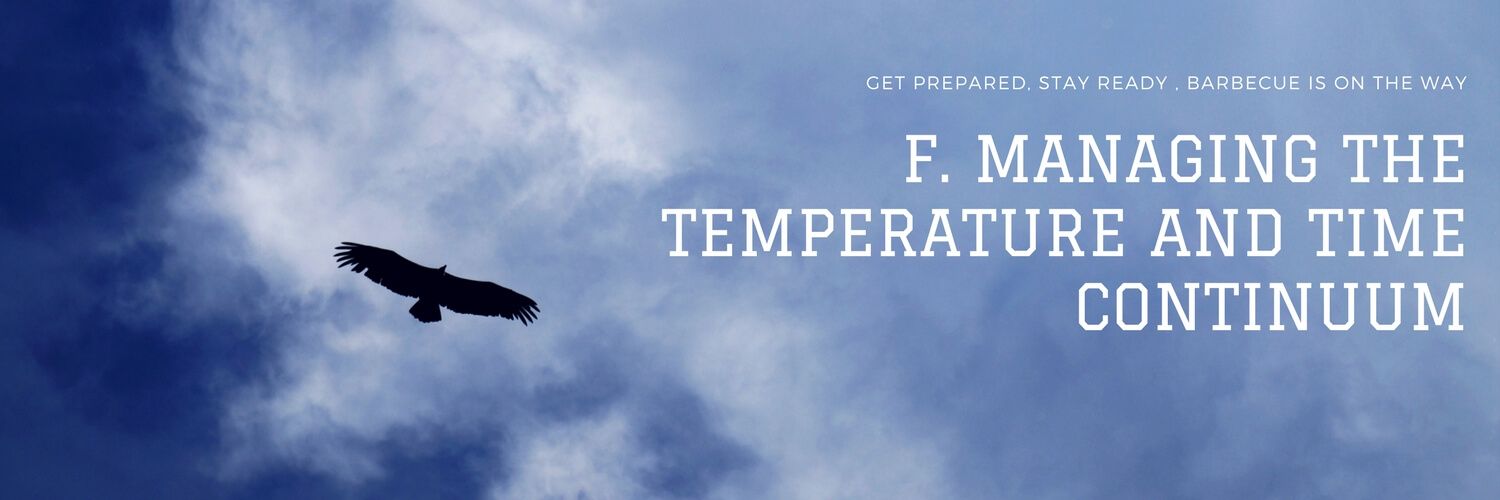
Tip #38 Grill vents can save your barbecue. Actually managing heat and temperature through the use of grill vents is critical to the success of your barbecue. Start charcoal grills with the vent wide open, then notch down the grill when the temperature exceeds the range you direct to cook. Keep in mind notching down too much can stifle the oxygen available to keep the coals going thus causing the cook cycle to slow down. Also, we want to ensure that meat cooks in a reasonable range somewhere around 225 to 275 degrees, not too low and not too high.
Tip #39 Gas grill vents are very similar to charcoal grill vents. The difference being that gas is delivered and managed through a primary source in many cases a tube underneath and in the center of the grill delivers the actual gas. If you close off the vents too much you can starve the grill of air which will eventually kill the flame. Note, gas will continue to flow but there will be no flame this is very dangerous and one must be careful to first open the grill to allow the excess gas to escape then re-light the grill. Lighting the grill after may cause a small explosion and can damage parts of the grill or ruin your meats.

Tip: #40 Some may be thinking that knowing the end of the cooking process is common sense but believe me it isn’t. Many people don’t actually know when their meats are done. The secret is to know what temperature you want before you start and to have adequate tools that will measure for that temperature when cooking. Get a good meat thermometer and check our cooking chart to ensure you know when your meat is done.

Tip: #41 More critical for some meats is the process of resting. Too often people grill some luxurious roast or steak only to find that their meats are tough. The meats during testing on the grill seemed fine however, something miraculous happened which can’t seem to be explained. Well we have an answer, meats need to be rested. Larger meats require longer resting periods. Resting allows the juices of the meat to be re-absorbed and juices that remain in the meat add to the tenderness of the meat. If you cut into a steak or roast right after it has been removed from the grill you might notice a puddle of juices on your plate. That simply says you should have rested the meat longer. We suggest a minimum of 20 minutes for a roast and 10 minutes for a steak. Some roasts will be rested for up to 30 minutes or more depending on size.
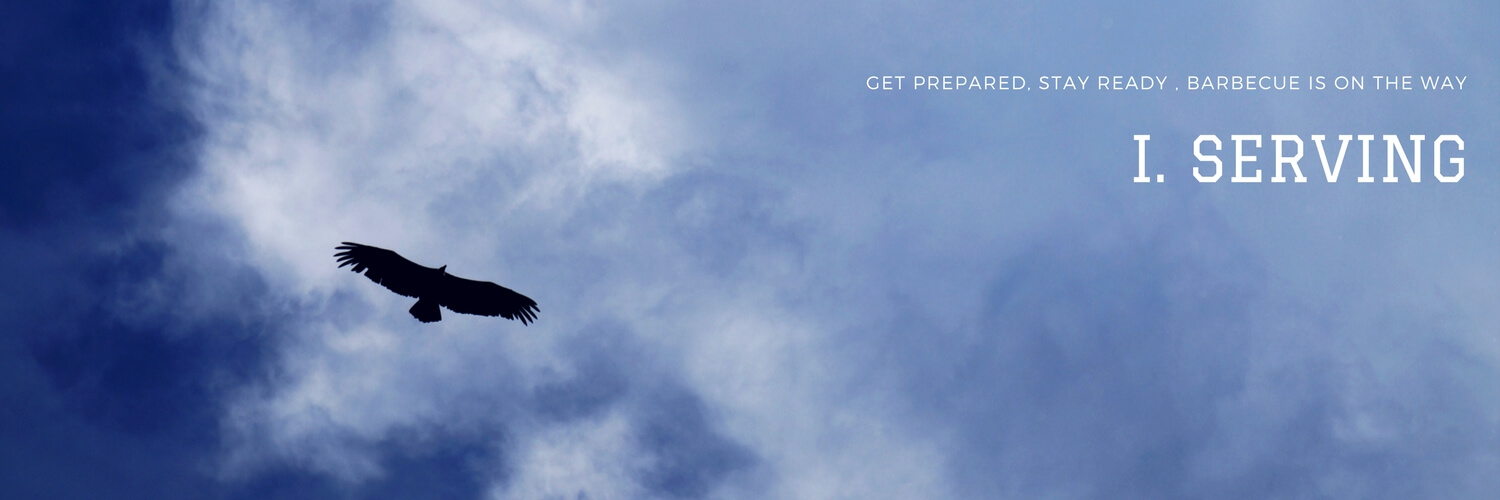
Tip: #42 Serve Barbecue when it is warm to hot. If desired warm some bbq sauce and have it in a container on the side much like the sauce for buffalo wings. Barbecue can be served with mashed potatoes or fries but the centerpiece is always the barbecue.
Tip #43 When serving barbecue, if your plates aren’t already warm you can do so by setting them in the oven at 150 degrees for 4 to 5 minutes. Remove the plates and place them on a counter top adding the barbecue directly to the plates. Do not place warmed plates on anything plastic as melting or warping can result.
Tips #44 Wood Chips – for better smoking results soak wood chips for about 20 minutes before you barbecue then place chips directly on coals. Gas grills have smoker trays that can be added or purchased to produce the same smoke effect.
Tip #45 The most common smoking woods are hickory, mesquite and alder. Start with basic hickory using just a few chips until you master the process.
Tip #46 When grilling steaks ensure that charcoal or your gas grill reaches a minimum of 500 degrees. Steaks should be seared first then allowed to finish indirectly if doing so on a barbecue grill.
Tip #47 Keeping food warm after the barbecue: To keep food warm afterwards use water coolers, hot water baths or chafing dishes. Each is specific to the task and can hold the temperature on barbecue for hours.
Tip #48 Cutting Tri Tip Roast: This meat is often labeled the “Santa Maria Steak” and is especially popular in California. The best way to cut the meat after grilling is cut it on a bias across the natural grain of the meat. Follow the grain and move your cuts with the changes of the grain. Cut the meat into ¼ inch strips which can be easily chewed. If you don’t intend to eat the entire portion of the Tri Tip, reserve the uncut portion and place it in a plastic bag and hold in the refrigerator. Tri Tip can be held for at least 5 days without concern.
Tip #49 Putting BBQ Sauce on Steaks: In most cases adding barbecue sauce to steaks is far preferred than adding the sauce during the cooking process. Most good steaks cook about 8-10 minutes per side when the temperature exceeds 500 degrees. You can add sauce sparingly to the steaks then place them back on the grill to charbroil in the flavor. Keep in mind the additional cooking time may make the steak tougher. Best bet is to add the sauce about 10 degrees before the finish of the steak to ensure that the sauce is warmed and the steaks turns out nicely.
Interested in joining our site just click here
 BBQ Recipes
BBQ Recipes #1 Baby Back Ribs, Tri Tip And Fennel Style Recipe
Ingredients:
- 1 Jar Jake's Original Mild BBQ Sauce
- 1 5 oz container Jake's Tri Tip, Steak and Rib Rub
- 1 Tablespoons of ground Fennel
- 1 Rack Baby Back Pork Ribs
- 1 Appetite!
Directions:
Pour 1 Tablespoon of Fennel either whole or ground into a Cuisinart or similar blender. If using whole Fennel seed you may consider setting your blender to chop until the seeds have broken down to about 1/5 their size. Once the Fennel is blended open the 5 Oz container of Tri-Tip Rub and pour in with the Fennel. Continue blending the Tri-Tip Rub and Fennel together until thoroughly mixed. When done pour the Tri-Tip Rub and Fennel mixture back into the 5 Oz container. Shake on to the ribs and let rest 1 hour before grilling.
Recipe #2 Burgundy steak marinade brings out the tantalizing, full rich flavor of steaks........
Ingredients:
- 2 Rib Eye or New York steaks For Marinade
- 1/2 teaspoon salt
- 1/4 teaspoon pepper
- 1 clove garlic, minced
- 1/2 cup oil
- 1/2 cup burgundy or dry red wine
- 2 tablespoons ketchup
- 2 tablespoons molasses
Directions:
Combine marinade ingredients and mix well; Place mix in container and add steaks; turn to coat, Cover and seal. To make steaks tender marinate for no more than 2 hours. Steaks can be marinated for more than 3 hours if desired, however, steaks may become mushy and may lose their natural flavoring.
Recipe #3 Grilled Barbecue Pork Steaks are fantastic for grilling and make and excellent meal.
Follow the steps to achieve your grilling bliss.
Ingredients:
- 4 pork blade steaks, 1 to 1 1/4-inches thick
- 1/2 cup bottled barbecue sauce
- 1/3 cup honey
- 1 tablespoon Worcestershire sauce
- 1 teaspoon garlic salt
- 1/2 teaspoon prepared mustard
Directions:
Place steaks on grill about 4 inches above medium-slow coals. Cook about 8 minutes on each side meanwhile, stir together remaining ingredients in a small bowl. Brush steaks with sauce and continue cooking 5 minutes more, turning and brushing with sauce.
Double Bonus Video: Double Snake Method BBQ Ribs and Chicken by Jake’s Famous Foods
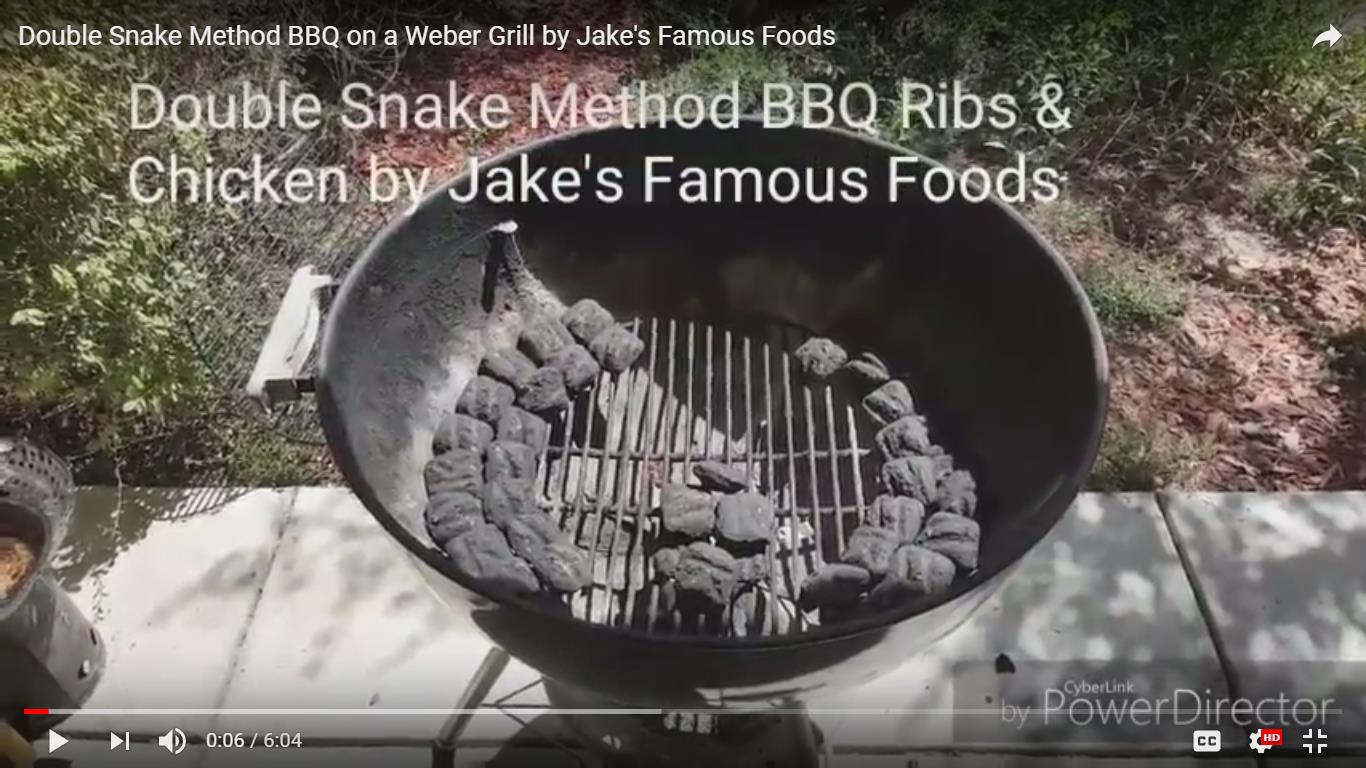
Interested in joining our site just click here
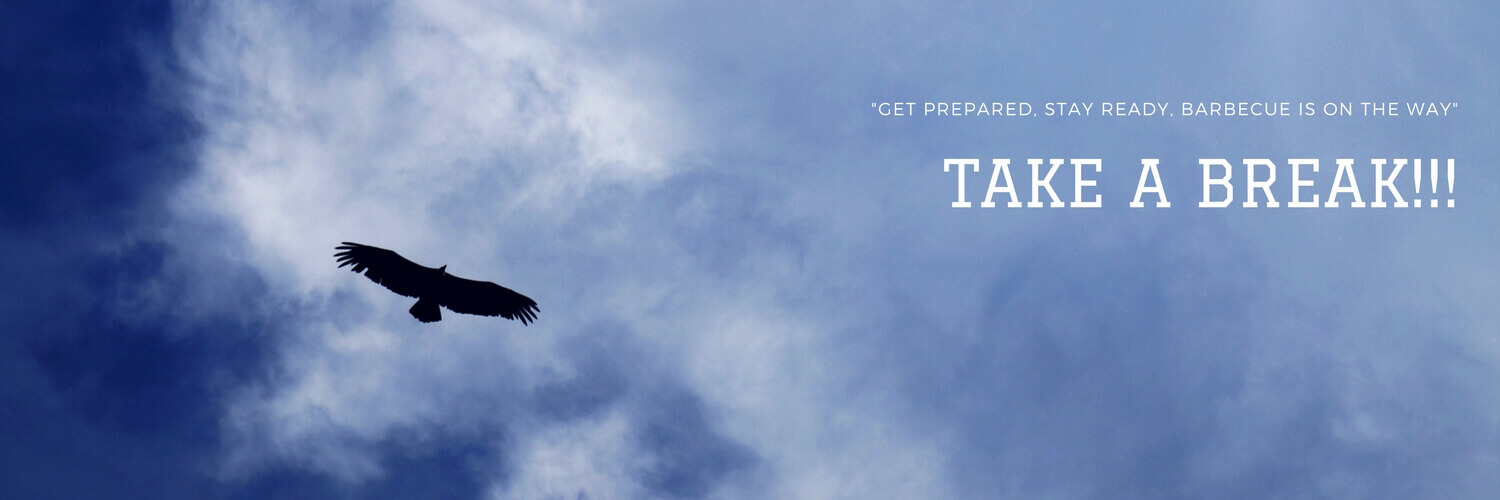
These are a lot of tips to take in…so sometimes it’s a good idea to just stop and smell the roses while your mind absorbs the material. There’s an actual study that taking a break or meditating can actually amplify your mental clarity. But when that’s over…just get back to the Barbecue.
We hope you've enjoyed our 40+ Tips on Cooking and Grilling Barbecue. If you have a Tip that you would like to add just click on our contact link below and send your Tip. We will include your Tip and name with this post. Contact Us.
Summary
Overall these tips prove to be helpful but this post could be longer. We think listing around 100 tips in total is not a completely unreasonable goal.
Thank you for reading.....


